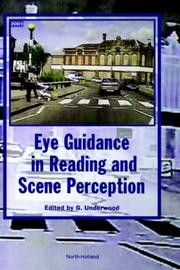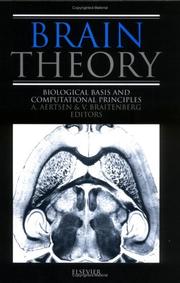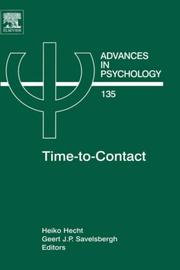| Listing 1 - 10 of 510 | << page >> |
Sort by
|
Book
Year: 2017 Publisher: [Place of publication not identified] : Great Neck Publishing,
Abstract | Keywords | Export | Availability | Bookmark
 Loading...
Loading...Choose an application
- Reference Manager
- EndNote
- RefWorks (Direct export to RefWorks)
Book
ISBN: 1138203610 1315471310 1315471337 9781315471327 1315471329 9781315471334 9781138203570 9781315471310 9781315471303 1315471302 Year: 2017 Publisher: London : Routledge,
Abstract | Keywords | Export | Availability | Bookmark
 Loading...
Loading...Choose an application
- Reference Manager
- EndNote
- RefWorks (Direct export to RefWorks)
Book
ISBN: 2763737064 9782763737065 9782763737058 2763737056 Year: 2019 Publisher: Quebec : Presses de l'Universite Laval,
Abstract | Keywords | Export | Availability | Bookmark
 Loading...
Loading...Choose an application
- Reference Manager
- EndNote
- RefWorks (Direct export to RefWorks)
Ce livre est destine principalement aux etudiants du premier cycle universitaire inscrits dans un programme en psychologie. Il permet à l'etudiant de se familiariser avec la terminologie du domaine de la sensation et de la perception et de se sensibiliser au caractere relatif de la perception. L'ouvrage fournit egalement à l'etudiant l'occasion de comprendre de nombreux concepts et mecanismes fondamentaux susceptibles de le rendre apte à interpreter differents phenomenes perceptifs. En plus de l'ajout d'un resume, de mots cles et de questions de revision à la fin de chaque chapitre, cette deuxieme edition contient un chapitre sur la sensibilite somatosensorielle.
Book
Year: 2005 Publisher: [Place of publication not identified] : KIT Scientific Publishing,
Abstract | Keywords | Export | Availability | Bookmark
 Loading...
Loading...Choose an application
- Reference Manager
- EndNote
- RefWorks (Direct export to RefWorks)

ISBN: 9780080433615 0080433618 0585473986 9780585473987 0080506232 9780080506234 1280927267 9781280927263 9786610927265 Year: 1998 Publisher: Amsterdam ; New York : Elsevier,
Abstract | Keywords | Export | Availability | Bookmark
 Loading...
Loading...Choose an application
- Reference Manager
- EndNote
- RefWorks (Direct export to RefWorks)
The distinguished contributors to this volume have been set the problem of describing how we know where to move our eyes. There is a great deal of current interest in the use of eye movement recordings to investigate various mental processes. The common theme is that variations in eye movements indicate variations in the processing of what is being perceived, whether in reading, driving or scene perception. However, a number of problems of interpretation are now emerging, and this edited volume sets out to address these problems. The book investigates controversies concerning the variations in
Eye --- Visual perception --- Movements --- Visual perception. --- Movements.
Book
ISBN: 9788024651064 Year: 2022 Publisher: Prague : Karolinum Press,
Abstract | Keywords | Export | Availability | Bookmark
 Loading...
Loading...Choose an application
- Reference Manager
- EndNote
- RefWorks (Direct export to RefWorks)
This book by Jan Carboch explores the critical aspects of visual perception and anticipation in tennis. It analyzes how these cognitive processes influence player performance and decision-making during matches. The book delves into various factors affecting play, such as court surface, ball quality, and psychological determinants. It includes scientific research and theoretical insights into the mechanics of tennis shots, strategies, and the role of visual cues for both players and referees. The intended audience includes sports scientists, coaches, and advanced tennis players seeking to enhance performance through a deeper understanding of perceptual and anticipatory skills.
Visual perception. --- Expectation (Psychology) --- Visual perception

ISBN: 9780080528298 0080528295 9780444820464 0444820469 1283246376 9781283246378 9786613246370 Year: 1996 Publisher: Amsterdam ; New York : Elsevier,
Abstract | Keywords | Export | Availability | Bookmark
 Loading...
Loading...Choose an application
- Reference Manager
- EndNote
- RefWorks (Direct export to RefWorks)
The present collection of papers focuses on the subject of vision. The papers bring together new insights and facts from various branches of experimental and theoretical neuroscience. The experimental facts presented in the volume stem from disparate fields, such as neuroanatomy, electrophysiology, optical imaging and psychophysics. The theoretical models in part are unsophisticated, yet still inspiring, while others skilfully apply advanced mathematical reasoning to results of experimental measurements. The book is the fifth in a series of volumes intending to define a theory of the brain by

ISBN: 1423769783 9781423769781 9780444510457 0444510451 0080481388 9780080481388 1280919493 9786610919499 Year: 2004 Publisher: Amsterdam ; London : Elsevier,
Abstract | Keywords | Export | Availability | Bookmark
 Loading...
Loading...Choose an application
- Reference Manager
- EndNote
- RefWorks (Direct export to RefWorks)
Time-to-contact is the visual information that observers use in fundamental tasks such as landing an airplane or hitting a ball. Time-to-contact has been a hot topic in perception and action for many years and although many articles have been published on this topic, a comprehensive overview or assessment of the theory does not yet exist. This book fills an important gap and will have appeal to the perception and action community. The book is divided into four sections. Section one covers the foundation of time-to-contact, Section two covers different behavioral approaches to time-to-contact e
Book
ISBN: 3110548801 3050046090 Year: 2017 Publisher: Berlin ; Boston : De Gruyter (A),
Abstract | Keywords | Export | Availability | Bookmark
 Loading...
Loading...Choose an application
- Reference Manager
- EndNote
- RefWorks (Direct export to RefWorks)
Anschaulichkeit ist Wissen. Forscher und ihre Mitstreiter, Lehrer und Schüler gewinnen Einsichten aus der visuellen Wahrnehmung der Welt und ihrer bildlichen Darstellung in Lehrbüchern, Schautafeln, Objektsammlungen und Präsentationen. Lehre wie Forschung machen sich diesen Zusammenhang von Sehen und Verstehen zunutze, indem sie ihr Gegenüber sprichwörtlich "ins Bild setzen". Auf der Stärke visueller Erkenntnis gründen sich nicht nur schlagende Zeichen und Motive, sondern auch komplexeste Wissensarchitekturen, welche die Gesellschaft bis in den letzten Winkel durchdringen. Diese Erkenntnismöglichkeit wird jedoch immer wieder bestritten - ausgerechnet mit dem Begriff des Pädagogischen verbindet sich die weitverbreitete Vorstellung, wonach Wissen und Verstehen durch Bilder lediglich vereinfacht übermittelt werde. Schon weil jedes Bild prinzipiell didaktisch genutzt werden kann, erscheint es als Argument unzureichend. Die zahllosen Verbindungen, die Bilder mit anderen Bildern, mit Texten und Zahlen eingehen, und die Zusammenhänge lassen jedoch auch den Wandel von Bildungsvorstellungen zutage treten, welche über den Einsatz von Bildern frei zu verfügen glauben. Den Begriff der Didaktik und des Pädagogischen ernstzunehmen heißt daher, das Bild nicht länger als bloßen Transporteur von Wissen und Denken abzutun, sondern von ihm aus die Möglichkeiten dieses Wissens und Denkens zu erschließen. Mit Beiträgen von Lena Bader, Steffen-Peter Ballstaedt, Anke te Heesen, Kerrin Klinger, Margarethe Pratschke, Astrit Schmidt-Burkhardt und Barbara Wittmann
Book
ISBN: 1617618667 9781617618666 1608760774 9781608760770 Year: 2010 Publisher: New York : Nova Science Publishers,
Abstract | Keywords | Export | Availability | Bookmark
 Loading...
Loading...Choose an application
- Reference Manager
- EndNote
- RefWorks (Direct export to RefWorks)
| Listing 1 - 10 of 510 | << page >> |
Sort by
|

 Search
Search Feedback
Feedback About UniCat
About UniCat  Help
Help News
News